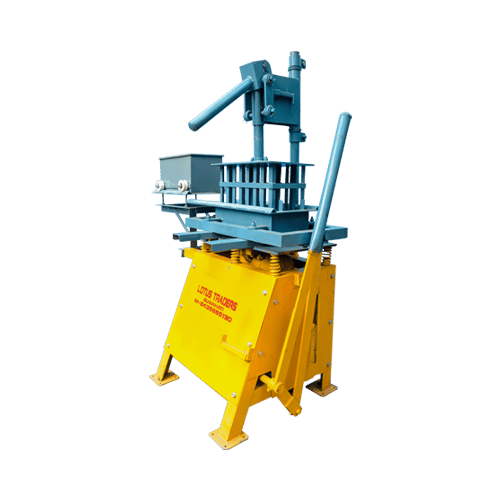Sand Replacement Apparatus
- High Quality Materials
- Compliance With Standards
- Clear Product Information
- Warranty & Support
- Product Testing & Certification
- Delivery & Policy
- Ask a Question
- Estimated Delivery: 5 Days – 10 Days
Information About Sand Replacement Apparatus:
Sand replacement
INTRODUCTION
Sand replacement is a construction technology that involves replacing traditional sand materials with other alternative material in order to achieve particular engineering standards. This approach is used in many civil engineering projects like road construction, concrete mixing and foundation work.
The material that substitutes can be different, the crushed stone to recycled materials based on project requirements and environmental aspects. Sand replacement helps engineers ensure better and greener construction projects. This technique contributes to resource optimization, minimization of environmental impact and the handling of problems related with availability and quality nature sand.
Therefore, sand replacement provides a solution to increasing the performance and environmental-friendly approach of construction practices in line with industry transformation needs for innovation.
KEY FEATURES
Non-Destructive Testing: Sand replacement is a non-disruptive technique used to calculate both the In Situ density and compaction index of soils, without disturbing the tested area.
Simple Procedure: The procedure is conducted by substituting known volume of soil with calibrated sand and determining mass difference to determine the in-situ density.
Standardized Equipment: Uses a sand pouring cylinder and calibration container to ensure standardization of testing apparatus as well as results.
Field Applicability: It is the versatility to be appropriated for different soil types and engineering sites.
Quality Control: Assists in evaluating the quality of soil compaction during construction to ensure that desired density is achieved for structural soundness.
Accuracy: The sand replacement is accurate when performed correctly, which assists engineers with appropriate decisions and construction professionals.
Time-Efficient: Provides a reasonably rapid approach to evaluating soil compaction that enables swifter corrections during construction operations.
UNDERSTANDING THE WORKING PROCEDURE
Sand replacement may be regarded as field tests carried out to assess the in-situ density of soil. Here’s a brief overview:
Setup: A pit in the ground is dug and its volume measured accurately.
Calibration: a known volume of sand is placed inside the hole, and its density is measured. This facilitates calibration of the equipment.
Test Procedure: The hole is filled with dry sand from a calibrated jar. The amount of sand involved is specified.
Calculation: In-place density of the soil is calculated by dividing volume occupied in whole hole with respect to that of sand used. This method is also beneficial for finding the field density of soils, specifically in construction projects because it allows us to understand soil compaction.
USAGE AND APPLICATION
It is widely used in construction and geotechnical engineering for understanding the compaction behaviour of soil. The process entails removing soil of a known volume and replacing it with sand to measure the difference in volumes after compaction. This testing method is carried out to determine the in-situ density and moisture of soil, which gives valuable information regarding its engineering behaviour.
Sand replacement tests are used in construction so as to design foundations and establish whether the level of soil is appropriate for building structures. Engineers then use the results in order to minimize efforts for compaction, so that soil beneath structures will be sufficiently compacted and hold he intended loads. Sand replacement is used in geotechnical engineering for soil classification and quality control during site investigations. It offers critical information for building embankments, highways and other earthwork projects.
With knowledge of the soil compaction properties, civil engineers can make critical decisions that are necessary to improve stability and address settlement cases. Sand replacement tests are important in geotechnical studies, enabling researchers to determine how soil reacts when subjected with different conditions. This data is important in the design of models and forecasting what effects engineered structures will have after many years, leading to safer construction practices.
ADVANTAGE AND BENEFIT
Sand replacement in construction has several benefits. Secondly, it enables better control of the concrete properties increasing its strength and solidity. By replacing sand with other materials such as crushed fines or quarry dust, the impact of over mining on environmental issues can be minimized by the construction industry. In addition, sand replacement allows reducing the cost: other materials may be cheaper or can simply widely spread in country.
This process also contributes to mitigating the global problem with limited natural sand supplies, which is aimed at preserving sustainable construction. Moreover, the utilization of appropriate substitutes may increase workability and decrease water demand in concrete mixtures thereby also improving construction procedure as a whole. Finally, sand replacement brings about a two-fold advantage in that it not only improves the performance of concrete but also promotes sustainability and cost effectiveness.
CONCLUSION
However, sand replacement plays an important role in different fields such as construction and geotechnical engineering. The use of alternatives to natural sand, such as crushed stone or recycled aggregates instead can help us ease some environmental issues which have put the world at risk. This method provides both economic benefits to sustainability and improves mechanical performance of construction materials.
When using the sand replacement strategies, improved compressive strength, durability and workability are established as positive outcomes. In addition, innovative technology applications like advanced concrete mix designs and artificial intelligence in material science give rise to new opportunities for improved sand replacement ratios.
It results in less harmful and more cost effective ways of constructing. Despite possible difficulties in the adoption of new construction techniques based on these alternatives, their long-term gains from resource saving and environmental preservation make sand replacement a fertile ground for sustainable development. Ongoing cross-industry research and cooperation will be crucial to fine tune methods, confirm results, and help establish sand replacement practices in construction sites; engineering projects.
Sand replacement is a procedure in geotechnical engineering for estimating the actual density of soil on site.
The volume of the excavated hole is calculated. For in-place density, the volume of sand replacing excavated soil gives it.
It offers information on the compressibility of soil, vital to building works for stability and ability-to-support loads.
The machine often consists of a sand pouring cylinder, measuring flask, digging tools and scales.
Sand replacement results can also be affected by moisture content, uniformity of soil and the compaction level achieved during testing.
















